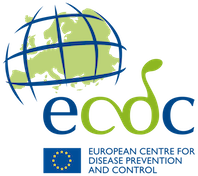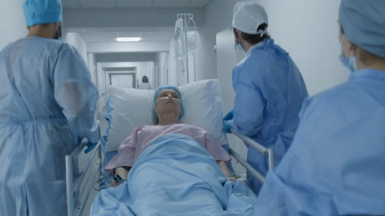New drug resistant form of tuberculosis reported in IndiaArchived
In a recent scientific article (Udwadia, F et al. Clin. Infect. Dis. 2011, Dec 21, Eprint) four cases of so-called total drug resistant tuberculosis (TB) were reported from India.
In a recent scientific article (Udwadia, F et al. Clin. Infect. Dis. 2011, Dec 21, Eprint) four cases of so-called total drug resistant tuberculosis (TB) were reported from India. According to the article, these patients have shown resistance to all the first line TB drugs (isoniazid, rifampicin, ethambutol, pyrazinamide, streptomycin) and to seven second line anti-TB drugs (ofloxacin, moxifloxacin, kanamycin, amikacin, capreomycin, para-aminosalcyclic acid and ethionamide)
ECDC comment (12 January 2012):
Drug-resistant tuberculosis is manmade and results from inadequate treatment management of TB cases like irregular treatment regimen prescription, poor compliance to treatment plans or sub-optimal dosing due to biological variations in drug uptake. The key to preventing the development of drug resistance, multi-drug resistance or extensively drug resistance is to provide patients with the correct multi-drug TB treatment regimen for the entire treatment time. Total drug resistant TB is a relative notion and depends on the local drugs available and tested on. This term/expression should either be avoided or should be defined worldwide. The World Health Organization (WHO) has internationally-endorsed treatment recommendations for the treatment of drug-susceptible, MDR-TB and XDR-TB.
Successful treatment of TB is possible but requires full support from the health care system by offering optimal diagnostic services, high-quality drugs for the full time of treatment and support to the patient in fulfilling the treatment. To make this happen, strong TB diagnostic services and processes that ensure the rational use of TB drugs (1,2,3) are essential in order to be able to test all suspected TB cases for drug-resistance and to identify resistance as soon as possible to enable appropriate therapy. Furthermore, ensuring treatment outcome monitoring of all cases is vital.
In 2009, 1.450 MDR-TB cases were reported in the EU/EEA (5.3% of all TB cases) and 66 XDR-TB case were reported by 15 EU/EEA countries. Cases resistant to almost all anti-TB drugs have been reported in the EU, albeit not many. In 2007, two cases resistant to all the second-line TB drugs in Italy were also described in the literature (4). Both cases had acquired resistance to these multiple drugs as a result of mismanagement of treatment (this included erratic treatment prescription and poor treatment adherence).
Yet, the full extent of the XDR-TB burden in the EU/EEA is not known as to date not all countries report these results, and much less for TB forms resistant to almost all anti-TB drugs. However, MDR-TB and XDR-TB are clearly present in the EU/EEA and it is important to maintain and strengthen TB control programmes to assure all TB patients are rapidly identified, tested for drug-resistance, receive appropriate treatment and are supported to ensure full completion of treatment. It is every individual patient’s right to receive the best of care and in a public health view, this is essential to prevent the further spread/transmission of TB in the population.
To prevent further spread of TB, drug-resistant TB, MDR-TB, XDR-TB in the population, it is essential that appropriate infection control measures are in place.(5)
In response to the findings of a survey on MDR-TB case management in the EU (6,7), ECDC and the European Respiratory Society (ERS) jointly developed European Union Standards for Tuberculosis Care (ESTC)(8). These aim at providing EU-tailored standards for the diagnosis, treatment and prevention of tuberculosis (TB)(9). Effective TB, MDR-TB and XDR-TB prevention and control in the EU can only be achieved when all the three components function optimally. These ESTC have been developed on the basis of the existing International Standards for TB Care, to ensure conformity and comparability with the global standards.
To further support EU Member States in improving and maintaining strong TB control programmes, ECDC is coordinating the European Reference Laboratory Network for TB (ERLN-TB) with the aim to strengthen TB diagnosis, surveillance, drug susceptibility testing, and international coordination in the EU/EEA. Also, ECDC has been developing molecular surveillance of MDR-TB in the EU (through an open contract), aiming at developing molecular typing in EU Member States to enable the mapping of MDR-TB in the EU/EEA. In 2012, ECDC will be incorporating molecular typing in the ERLN-TB as well as introducing the Molecular Surveillance System for which MDR-TB reporting will be provided. This will be essential to further monitor MDR-TB in the EU and identify strengths and challenges.




